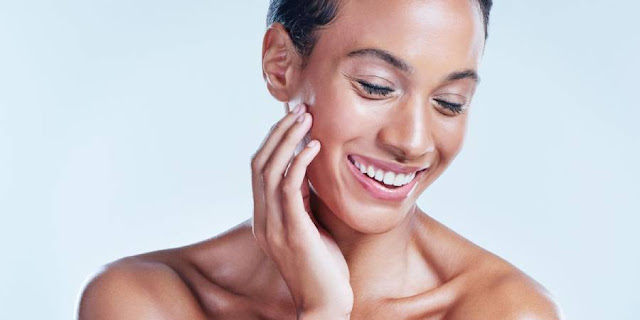Featured
- Get link
- X
- Other Apps
The Evolution of Beauty Standards
.jpg)
From Ancient Civilizations to Modern Times
Beauty standards are constantly evolving, influenced by
culture, society, and history. From the ancient civilizations to the modern
era, our perception of beauty has undergone significant transformations,
reflecting the values and norms of each time period. In this exploration of the
evolution of beauty standards, we will delve into the fascinating journey of
beauty ideals and how they have been shaped by various cultural, societal, and
historical factors.
Ancient Civilizations: The concept of beauty in ancient
civilizations often revolved around specific ideals that varied across
different cultures. For example, in Ancient Egypt, beauty was associated with a
youthful appearance, as evidenced by the use of cosmetics and elaborate
hairstyles. Ancient Egyptians valued smooth, unblemished skin and practiced
meticulous grooming.
In Ancient Greece, the notion of beauty was closely tied to
physical perfection, particularly in the male form. The Greeks celebrated the
athletic, idealized male physique and admired strong, muscular bodies. In
contrast, women were expected to possess delicate features and a harmonious,
proportional figure.
Ancient India had its own unique standards of beauty, with
the emphasis on dark, lustrous hair and glowing skin. The concept of beauty was
often linked to traditional Indian garments, jewelry, and intricate henna
designs. In Ancient China, the ideal of beauty encompassed delicate, porcelain
skin and small, delicate features, like a small mouth and feet. The Tang
Dynasty, however, witnessed a shift towards a more curvaceous female ideal.
Medieval and Renaissance Europe: The Middle Ages marked a
shift in beauty standards towards a more conservative and religious
perspective. The Church played a significant role in influencing beauty ideals,
promoting modesty and chastity. Pale skin was prized, as it symbolized purity,
while visible physical beauty was often concealed.
During the Renaissance, there was a resurgence of interest
in classical Greek and Roman aesthetics, bringing back a fascination with the
human body and a more naturalistic approach to beauty. The Renaissance period
celebrated the "Rubenesque" figure, with curvaceous women adorned in
flowing garments, representing fertility and opulence. This era's art and
literature often depicted idealized images of beauty, emphasizing symmetry and
proportion.
18th and 19th Century Europe: The 18th century witnessed a
dramatic shift in beauty standards, particularly in France, where the Rococo
era celebrated elaborate fashion and intricate hairstyles. Pale skin was still
considered beautiful, but cosmetics were used to enhance rather than conceal
natural features.
The Victorian era of the 19th century, however, was
characterized by a more conservative approach to beauty. The emphasis on
modesty and restraint resulted in the fashion of tight corsets to achieve a
wasp-waisted look. Pale skin remained in vogue, but cosmetics were considered
vulgar, and a more natural appearance was preferred.
20th Century and the Rise of Mass Media: The 20th century
saw the rise of mass media, which played a significant role in shaping beauty
standards. The ideal body type shifted numerous times during this period, often
reflecting societal and cultural changes. The Roaring Twenties celebrated the
"flapper" look, characterized by a boyish figure and bobbed hair,
symbolizing freedom and rebellion.
In the mid-20th century, the hourglass figure became
popular, with the likes of Marilyn Monroe representing the ultimate feminine
beauty. However, the 1960s brought a significant change as the "mod"
look took center stage, emphasizing a more androgynous and youthful appearance.
In the 1980s, a more muscular and athletic ideal emerged,
with figures like Arnold Schwarzenegger and Sylvester Stallone symbolizing male
beauty, while supermodels like Cindy Crawford and Claudia Schiffer represented
the female ideal. This era also saw an increased emphasis on fitness and body
image.
Contemporary Beauty Standards: Today, beauty standards
continue to evolve, influenced by a myriad of factors. The rise of social
media, globalization, and cultural diversity have led to a more inclusive and
diverse appreciation of beauty. People are celebrating a broader spectrum of
body types, skin colors, and gender expressions.
In recent years, there has been a greater focus on
authenticity and self-acceptance. The "body positivity" movement
encourages individuals to embrace their natural appearance and challenges
traditional beauty ideals. Brands and the fashion industry are also gradually
embracing models of different sizes, ages, and backgrounds.
In conclusion, the evolution of beauty standards from
ancient civilizations to modern times reflects the dynamic interplay of
cultural, societal, and historical influences. Beauty ideals have shifted
dramatically over the centuries, from the symmetry and perfection of ancient
Greece to the pale skin and corsets of the Victorian era, and finally to the
diverse, inclusive standards of beauty in the modern age. As we move forward,
it is important to continue challenging and redefining these standards to reflect
the rich diversity of human beauty and to promote self-acceptance and
authenticity in a rapidly changing world.
- Get link
- X
- Other Apps
Popular Posts
The Best Skin-Care Tips of All Time, According to Dermatologists
- Get link
- X
- Other Apps

